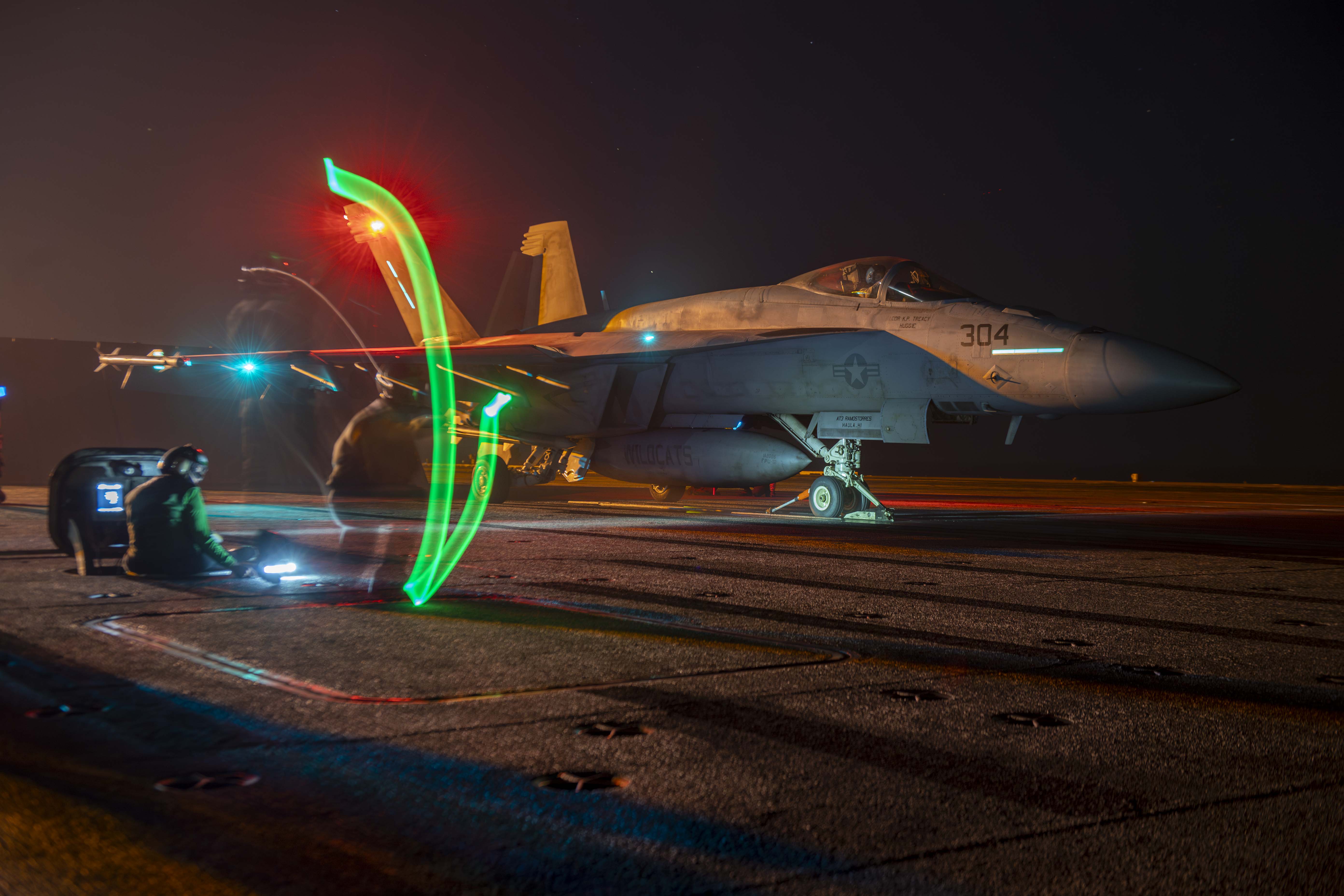
A Russian warship made an aggressive move toward a U.S. guided-missile destroyer operating in the North Arabian Sea on Thursday, U.S. Navy officials told USNI News.
USS Farragut (DDG-99) was operating as part of the Truman Carrier Strike Group when the Russian surveillance ship Ivan Khurs approached the destroyer from the aft, according to a video released by U.S. 5th Fleet.
“Farragut sounded five short blasts, the international maritime signal for danger of a collision, and requested the Russian ship alter course in accordance with international rules of the road,” the statement read.
“The Russian ship initially refused but ultimately altered course and the two ships opened distance from one another.”
Ivan Khurs, assigned to the Black Sea Fleet, is one of two Russian Yury Ivanov-class Russian intelligence collection ships. According to Turkish ship spotting site Bosphorous Naval News, the ship left the Black Sea on Nov. 29 before traveling to the Middle East.
USS Harry S. Truman (CVN-75) has been operating in the region since relieving USS Abraham Lincoln (CVN-72) as the U.S. on-station carrier in the Middle East last month.
Thursday’s incident follows a June encounter in which Russian destroyer Admiral Vinogradov came within 100 feet of a USS Chancellorsville (CG-62) operating in the Western Pacific.
In 2016, Russian Navy frigate Yaroslav Mudry (FF-777) and the guided-missile cruiser USS San Jacinto (CG-56) came close to a collision in the Mediterranean Sea. Mudry made multiple erratic maneuvers near the cruiser while coming within 150 yards of carrier USS Dwight D. Eisenhower (CVN-69) during flight operations. Days earlier, the same Russian frigate had published a video edited in a way that seemed to show guided-missile destroyer USS Gravely (DDG-107) cut in front of it.

The following is the Jan. 10, 2020 statement from U.S. 5th Fleet.
On Thursday, Jan. 9, while conducting routine operations in the North Arabian Sea, USS Farragut (DDG 99) was aggressively approached by a Russian Navy ship. Farragut sounded five short blasts, the international maritime signal for danger of a collision, and requested the Russian ship alter course in accordance with international rules of the road. The Russian ship initially refused but ultimately altered course and the two ships opened distance from one another. While the Russian ship took action, the initial delay in complying with international rules while it was making an aggressive approach increased the risk of collision.
The U.S. Navy continues to remain vigilant and is trained to act in a professional manner. We continue to encourage vessels from all nations to operate in accordance with internationally recognized maritime laws, standards and norms.





